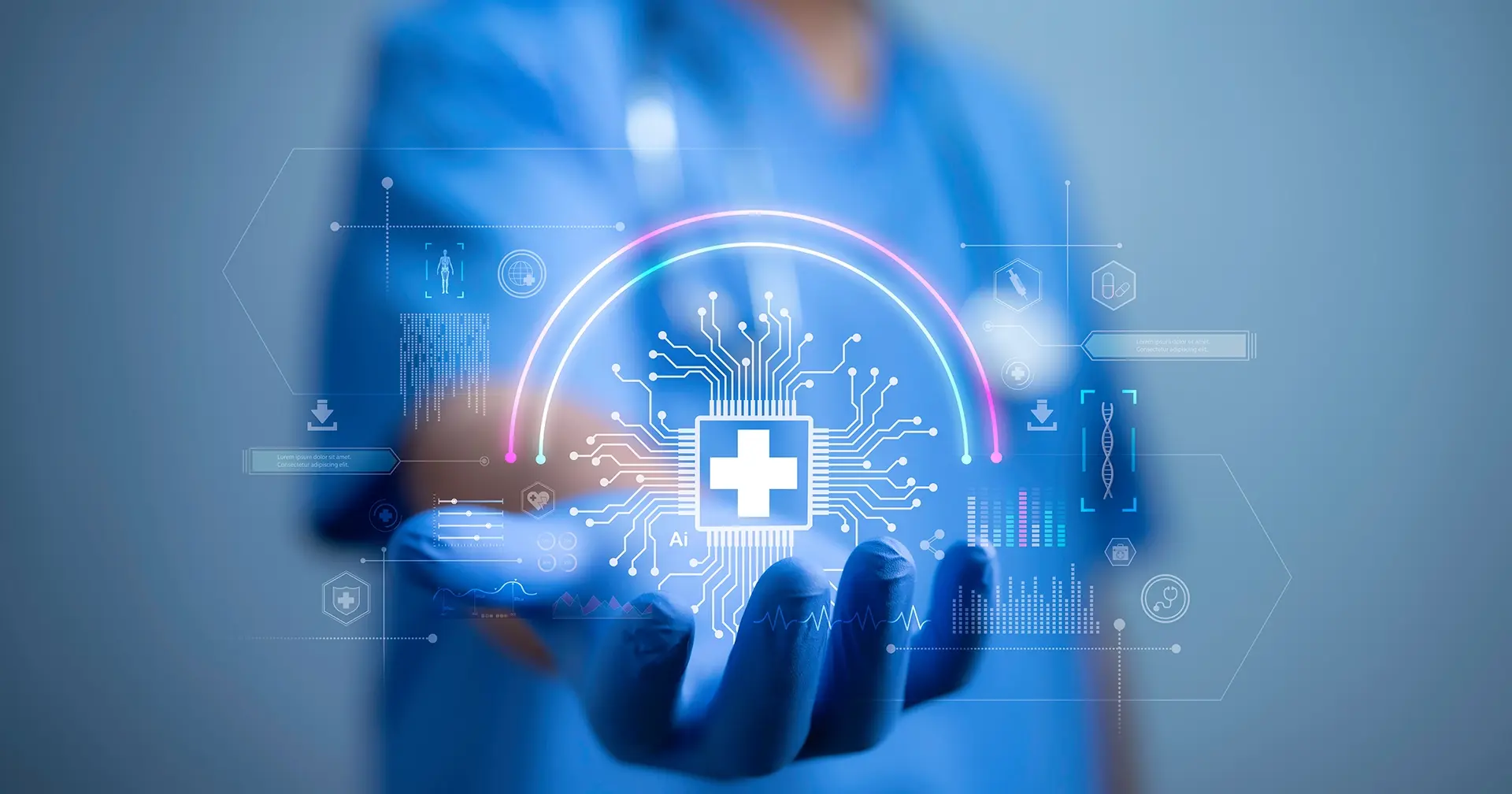One of the biggest problems in healthcare is that staff are chronically understaffed and overworked because many processes are inefficient. Digitalization can help to eliminate unnecessary work steps. But not all digital solutions are created equal. Only when devices and applications can communicate seamlessly with each other at all levels can the potential for efficiency actually be realized. The goal is therefore to create an integrated infrastructure throughout the healthcare system – a medical ecosystem. But what is needed to make this vision a reality?
Tens of thousands of positions in the healthcare sector have remained unfilled in recent years, and according to the German Council of Experts on Health and Care, the workforce would need to be increased by one million employees by 2040.
Healthcare facilities are currently caught in a vicious circle: bureaucracy and inefficient processes lead to extra work, employees are overworked and resign. It is not uncommon for them to then look for work outside the healthcare sector. Vacancies are difficult to fill, and until they are, the remaining staff have to fill the gap by working even more overtime. This makes the profession unattractive to young people, perpetuating the shortage. Meanwhile, demographic trends are leading to an aging population that requires more and more medical and nursing services, for which additional staff are needed – completing the vicious circle.
In the search for ways to relieve the burden on staff, bureaucratic tasks such as documentation requirements are repeatedly mentioned. However, there is much greater potential in the digitization of processes relating to patients and people in need of care. There are numerous opportunities here to avoid duplication of work or to automate sub-processes. As a "side effect," this could improve the quality of care, reduce treatment times, and thus save considerable costs in the healthcare system.
Medical ecosystem in action
However, the technical requirements for leveraging this potential for efficiency are not yet in place. Although the digitization of healthcare is progressing, there are still a few steps to take before a comprehensive "medical ecosystem" becomes a reality. This example shows what will then be possible:
- A wearable device continuously measures heart and vital signs;
- Embedded software analyzes the data and sends critical values to the cloud;
- A cloud service detects anomalies in the values and automatically notifies medical staff;
- Medical and nursing staff receive personalized recommendations for action via a dashboard;
- Patients and family caregivers can view the progression of the measured vital signs and the recommendations derived from them in an app;
- Compliance with regulatory requirements ensures security and data protection across all levels of healthcare.
Translated to the process level, the procedures are as follows:

Obstacles on the way to the goal
Despite these undeniable advantages, both manufacturers of medical devices and applications and their customers – such as clinics, practices, and nursing homes – are often still in the early stages of integrating these technologies. This makes it all the more important to make decisions about investments and in-house developments with a view to the future viability of such solutions.
On the manufacturer side, projects occasionally fail due to technical or regulatory hurdles. If the potential of digitalization is not exploited in product development, competitiveness suffers. Or the devices fail due to low user acceptance among hospital, nursing, or medical staff. If interoperability or the user interface or surface has to be revised retrospectively, high development costs for a redesign are likely.
The situation is similar for customers: for example, those who reject networking, rely on proprietary standards that only allow problem-free data exchange within a single manufacturer's platform, or squander efficiency potential because operation is complicated and error-prone, place an unnecessary burden on their staff – with negative consequences for recruitment and retention – and fall behind competitors in terms of service quality and speed. Under certain circumstances, devices may then have to be replaced before the end of their planned service life, resulting in high investment costs.
Requirements of the medical ecosystem
However, in order to use digitization profitably in healthcare and relieve staff of unnecessary tasks, a number of basic requirements must be met.
A key requirement is automated data flow—in some cases in real time—while maintaining privacy and data self-determination. In addition, requirements relating to IT security (cybersecurity), functional safety, and regulatory requirements, such as the General Data Protection Regulation (GDPR) and the EU Medical Device Regulation (MDR), must be part of the development process from the outset.
Furthermore, "applicability" – i.e., the development of UX/UI concepts (user experience/user interface) – must be given high priority, again with a focus on increased security requirements. This applies to both hardware and software operation. Devices or medical applications that are too complicated to use.
In addition, given the breadth and depth of a medical ecosystem, there are further requirements for every medical device and software application for the healthcare environment that must be taken into account during development. However, manufacturers sometimes lack the knowledge or experience to implement these. Examples of such aspects include:
- Embedded systems in safety-critical environments,
- the complex interaction of hardware and software,
- sensor technology and user interface (UX/UI), and
- human-machine interaction in medical applications.
Ways out of the dilemma
Many companies are therefore looking for external support. But even here, it is not easy to find suitable partners. Those who work with external consultants and service providers on specific topics quickly reach the limits of manageability and efficient communication in view of the diverse requirements.
If, on the other hand, you are looking for partners who offer "everything from a single source," the field becomes narrower. Such service providers need a broad range of expertise and experience: among other things, in digital technologies, medical domain knowledge, safety and security, and, last but not least, regulatory issues. One such partner is the EDAG Engineering Group (EDAG), which has proven itself as a technical service provider for various industries and is also active in the healthcare sector.
EDAG brings together numerous departments, each of which contributes specific skills, so that all the necessary expertise is available for projects. This also contributes to faster and more efficient development processes, as communication – including the provision of data – between departments is easier than between external partners.
However, customers who invest in medical devices and systems can also find support at the EDAG Group, for example in the evaluation of solution offerings, the implementation of networked applications, or the training of employees. The same applies to the design of such a transformation project or project management, in which EDAG assumes the role of general contractor.
Do you develop medical devices and want to ensure that you offer future-proof and competitive solutions that are geared towards real everyday needs? Or are you about to invest in your infrastructure and need support in drawing up specifications or evaluating suitable solutions? Then talk to Sinem Atilgan, Specialist Consultant for Digital Transformation, Tobias Schunk, Project Manager Software & Digitalization, or Michael Kelnberger, Sales Manager Technical Sales at EDAG. And download our white paper "From Medical Device Park to Medical Ecosystem" right here, which provides you with further details on steps toward sustainable development.






